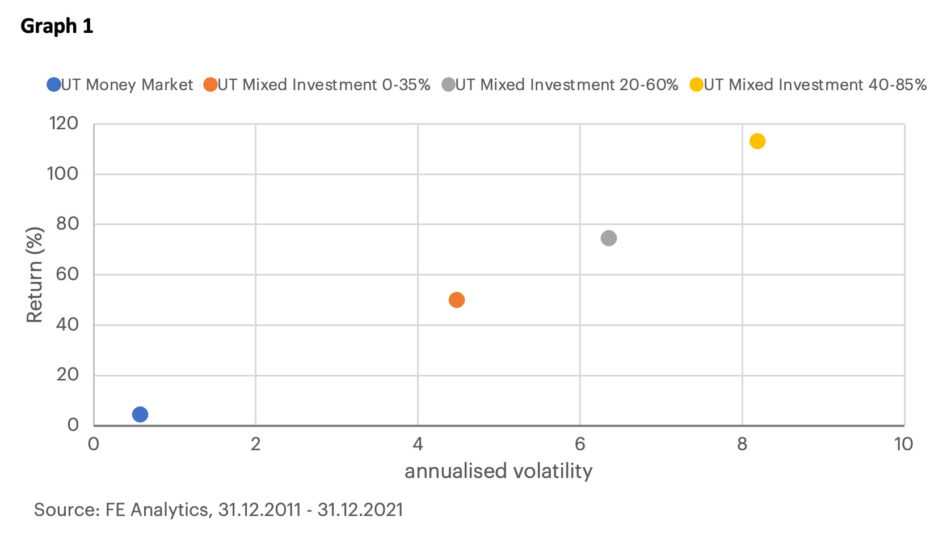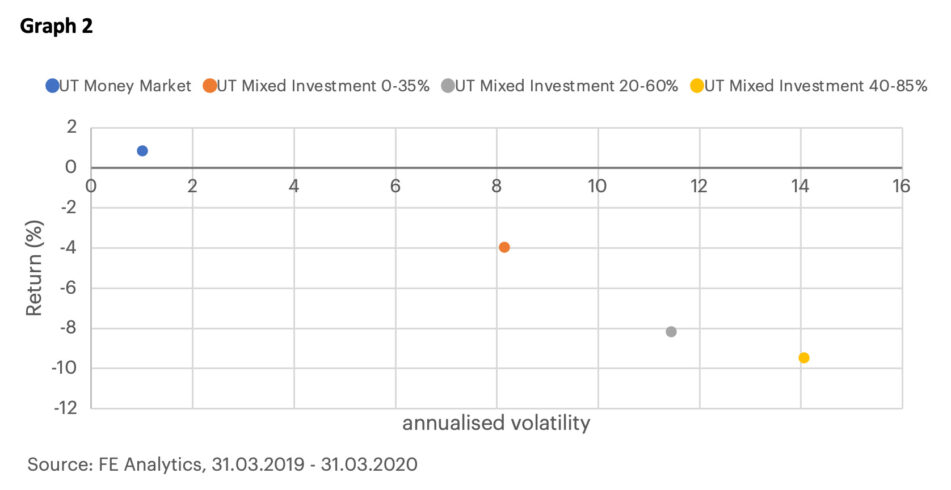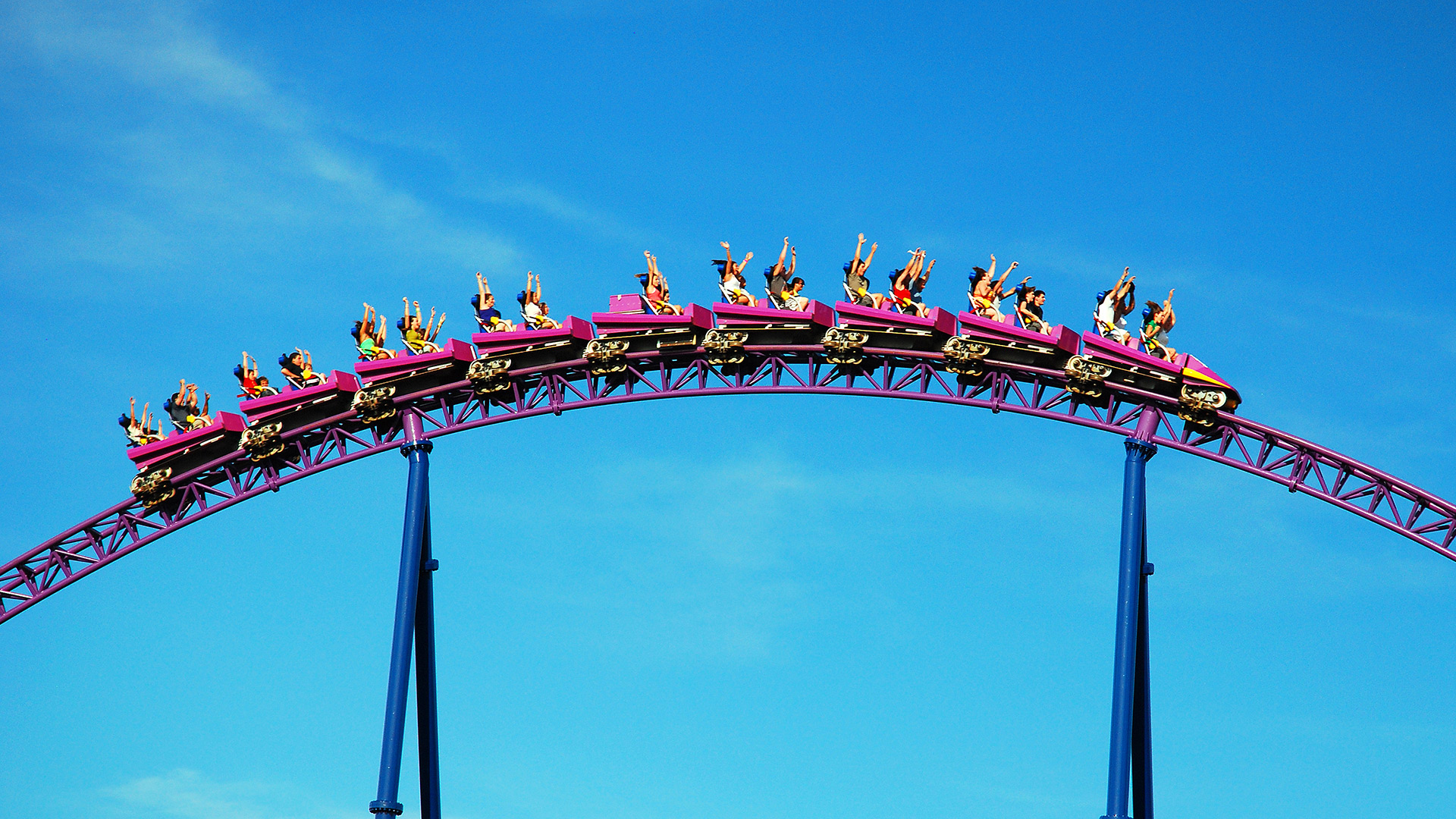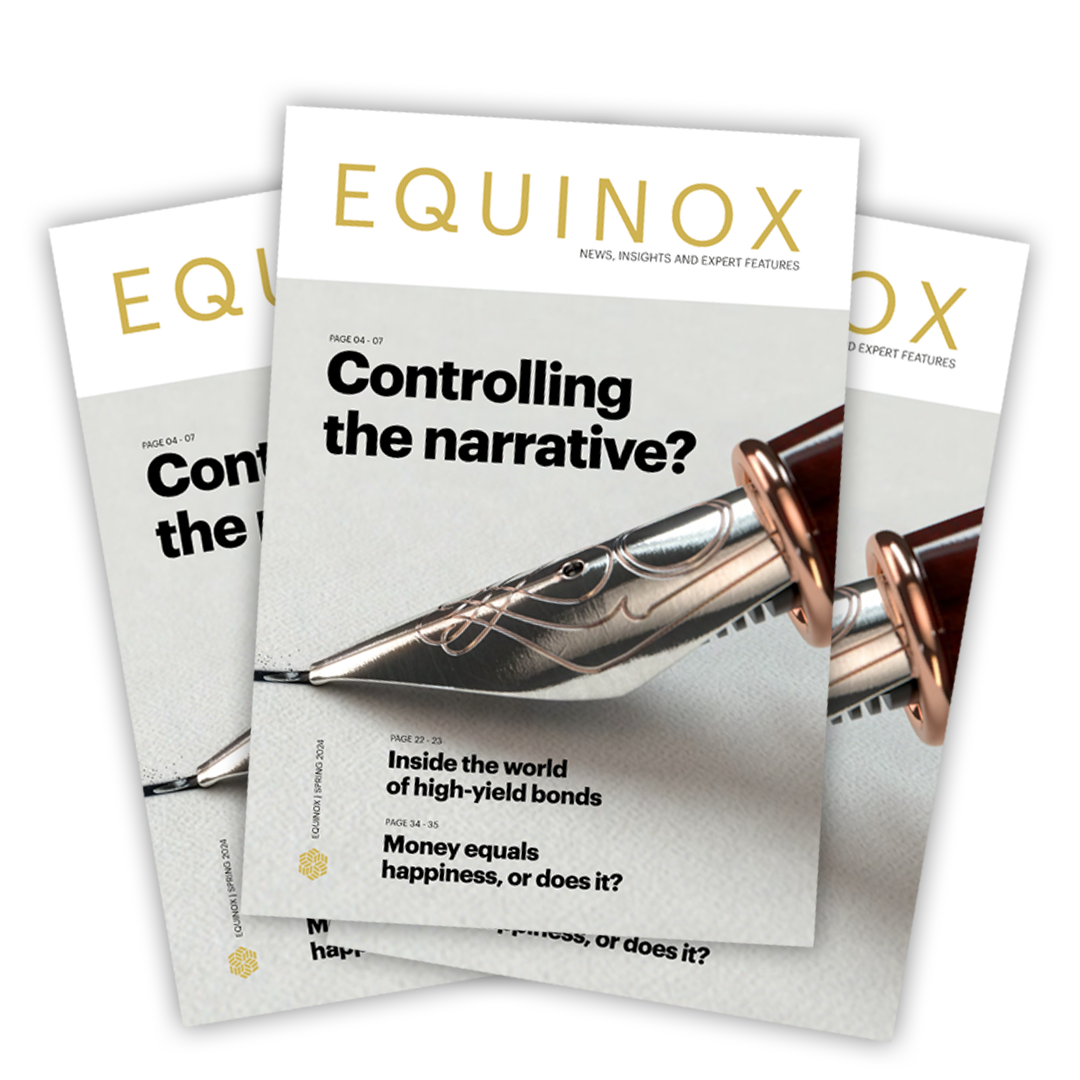What is risk?
Risk, along with return, is something we all associate with investments.
For individuals, risk can mean different things, it invokes very personal feelings and because of this it is very difficult to define or quantify. As personalities differ so too does an individual’s attitude towards, or desire, of risk.
The rollercoaster that offers just the right dopamine hit for the adrenaline junky, can be the source of stress for the less adventurous.
When looking at investments we can try and categorise risks by measuring certain aspects of behaviour. By using these consistent approaches, we can determine if one investment is more or less risky than another for that specific aspect.
Whilst there are many more investment risk metrics that we consider, we’ll look more closely at volatility and maximum drawdown.
What is volatility?
Volatility in investments looks to quantify the variance in returns you can expect from an investment, In other words, how much does the price of an investment move around. This can be calculated using the standard deviation of returns.
Variance implies the movements in price could be both negative and positive. The greater the variance, the higher the volatility and it follows, the riskier the investment is deemed to be.
If an investment is said to be volatile it can be unpredictable, and the value can change very quickly, whereas less volatile investments may be more predictable.
An investment fund that shoots up 20%, before falling back to make a 12% gain over 12 months, would be considered far more volatile than the one that makes 12% over a year by simply gaining 1% each month.
Though in reality, if you are to achieve greater returns over the long-term, you will generally have to accept higher volatility.
Graph 1 (below) compares the annualised performance against the annualised volatility of a range of unit trust (UT) sectors (a group of funds with similar investments – orange, grey & yellow) that invest with progressively more equity exposure and a sector with cash-like funds (blue).

This example shows that over a 10-year period, holding more equity has improved returns, but also increased the volatility of the investment.
Does more volatility equal more money?
It’s not quite as simple as increasing the volatility to increase the returns.
When investing with a long-time horizon, with an expectation to invest for at least 5-7 years or longer, more volatility could mean more attractive performance.
However, over shorter time frames, this is often not the case. Remember, volatility means the investment can go down as fast as it can go up.
Graph 2 (below) uses the same sectors as before but an annual period around the global pandemic has been selected.

This example shows the impact of the pandemic and to highlight the risk of higher volatility strategies over very short investment horizons.
What is max. drawdown?
Another way we can look at risk is the drawdown of an investment. By this we mean, how much an investment has fallen over a period. Maximum Drawdown (MDD) represents the greatest loss you could have experienced if you held the asset from peak to trough. In other words, how much you could have lost by holding this investment.
This is particularly useful to review when stress-testing investments in scenarios to understand the potential for loss if we were to experience a similar scenario.
This helps us manage our portfolios to avoid large drawdowns in certain situations, by trimming assets which we expect to fall further, we can reduce overall drawdown in portfolios.
What is the impact over the long-term?
We’ve seen with volatility, that increasing the risk could lead to greater long-term returns. Whilst accepting short-term drawdowns, we also anticipate the chance of recovery and outperformance.
Graph 3 (below) shows the annual max. drawdown (dots) against the calendar year total return (bars) of the FTSE All share index.

A quick glance and it’s easy to see that most calendar years, the index experiences a max. drawdown of over 10%, yet despite this, in most years the total return is over 10%!
How costly is it?
There isn’t always a return journey though, a high max. drawdown could be very costly if the price of the asset doesn’t recover. A permanent loss of capital could be considered the worst risk to a portfolio.
That being said, you are more at risk of a permanent loss of capital through holding direct shares in a company.
Consider a company that loses a key contract or there is falling demand for its products/services. It would be reasonable to assume its earnings expectations may not be met and the value of the company, and your shares, would fall.
In the worst-case scenario, a company may go out of business and the shares would be worthless.
Are there opportunities to recover?
On the flipside, the company may strike a new contract that increases earnings. Maintaining or adding to an asset about to recover following a large drawdown could generate very attractive returns.
The active fund managers we use, look to rebalance their portfolios to take advantage of short-term movements in share prices to improve the performance of their funds.
At a portfolio level, we also look to take advantage of assets that we feel have fallen more than they should have or where we see a good chance of them recovering through rebalancing or changing asset allocations.
Our thoughts
Drawdowns, like volatility, are inevitable when making investments.
In life, we often look at risk as something we need to reduce or mitigate so we can be more certain of a final outcome. In investments though, it is widely accepted the greatest returns can only be made by taking more risk and accepting your investments over time will go down as well as up.
A highly volatile investment can offer very attractive returns at times but also significant drawdowns which could be compounded by the timing of an investment or disinvestment.
Ideally, we want to hold little of something when it is falling, and more of something when it is going up, which given the unpredictable nature of risk assets is not always possible.
We believe investing in a diverse portfolio gives us the best chance of maintaining our desired returns over the long-term.
Our funds
As portfolio managers, understanding the relationship between investments in our portfolios is key when using the volatility of assets to our advantage. By managing our exposures and having a rational approach to risk-taking in the portfolios, we can construct a range of funds with the ability to take opportunities without taking undue risk.
Our range of funds are designed to provide the right fund or blend of funds to meet our client’s investment requirements. Managing investments through our horizon planning process aims to ensure a portfolio is protected over the short-term, whilst benefiting from the long-term potential gains of a riskier portfolio.
This blog is intended as an informative piece and does not construe advice. If you have any further questions, please don’t hesitate to get in touch with us using the form below or by reaching out to your usual Equilibrium contact.



